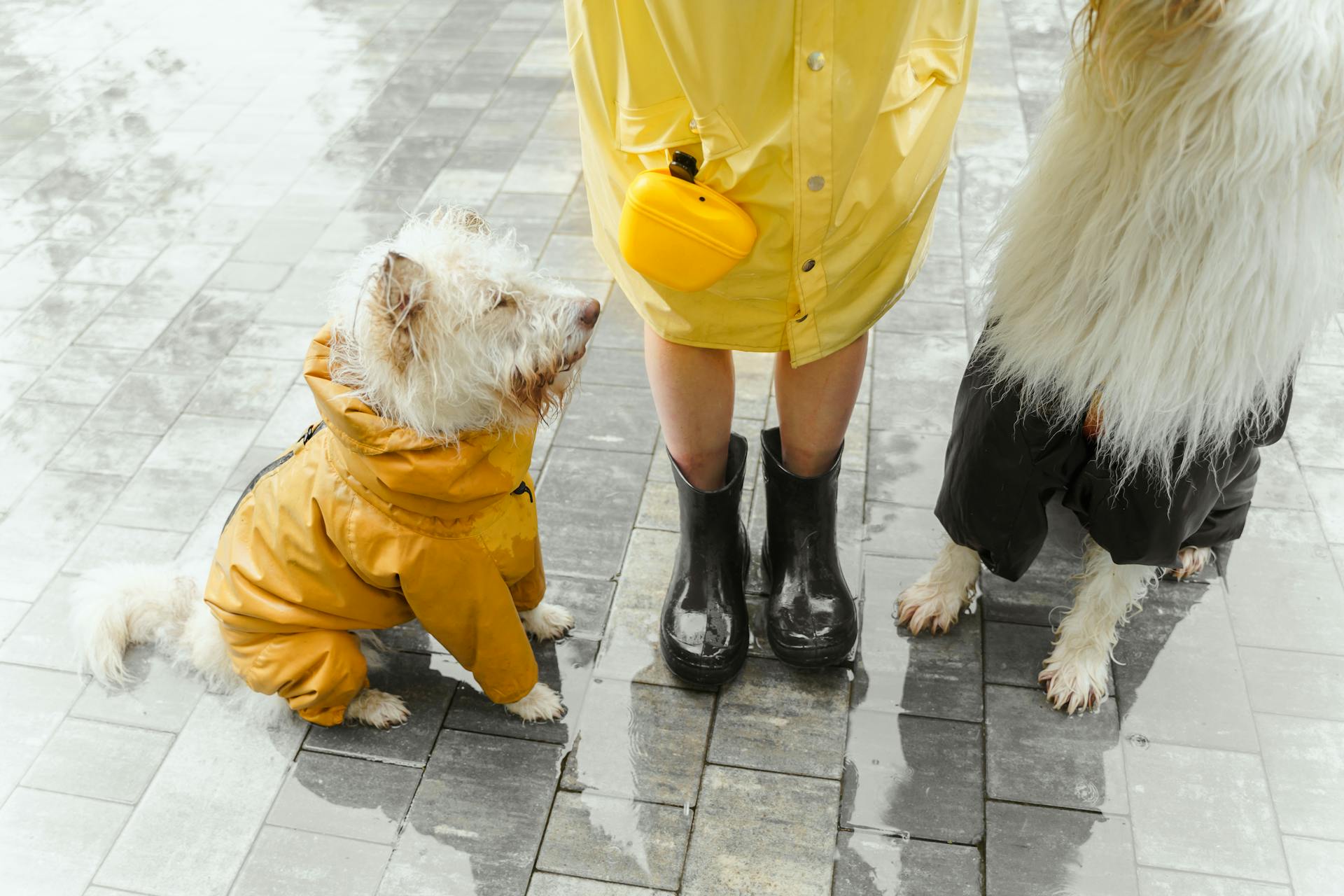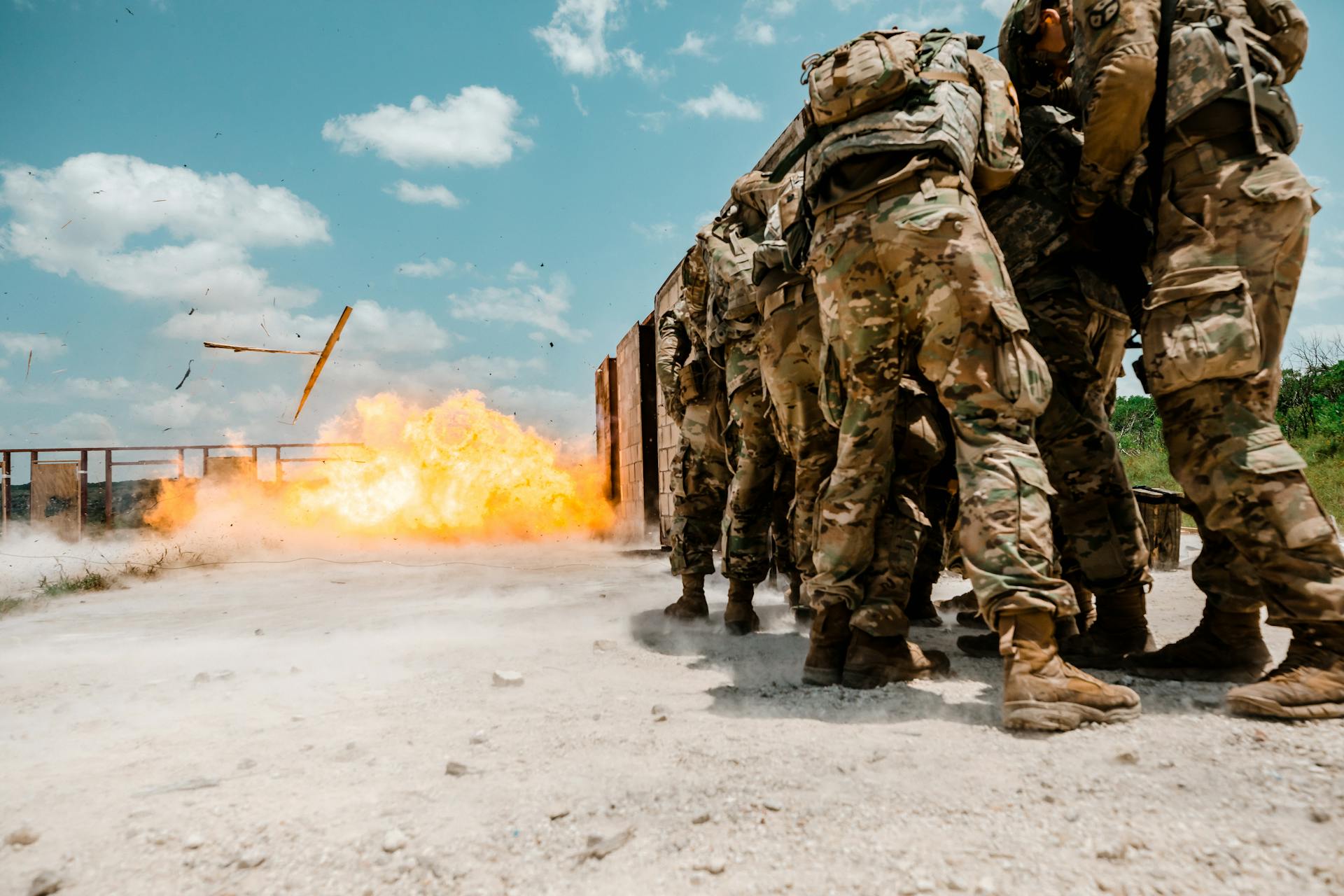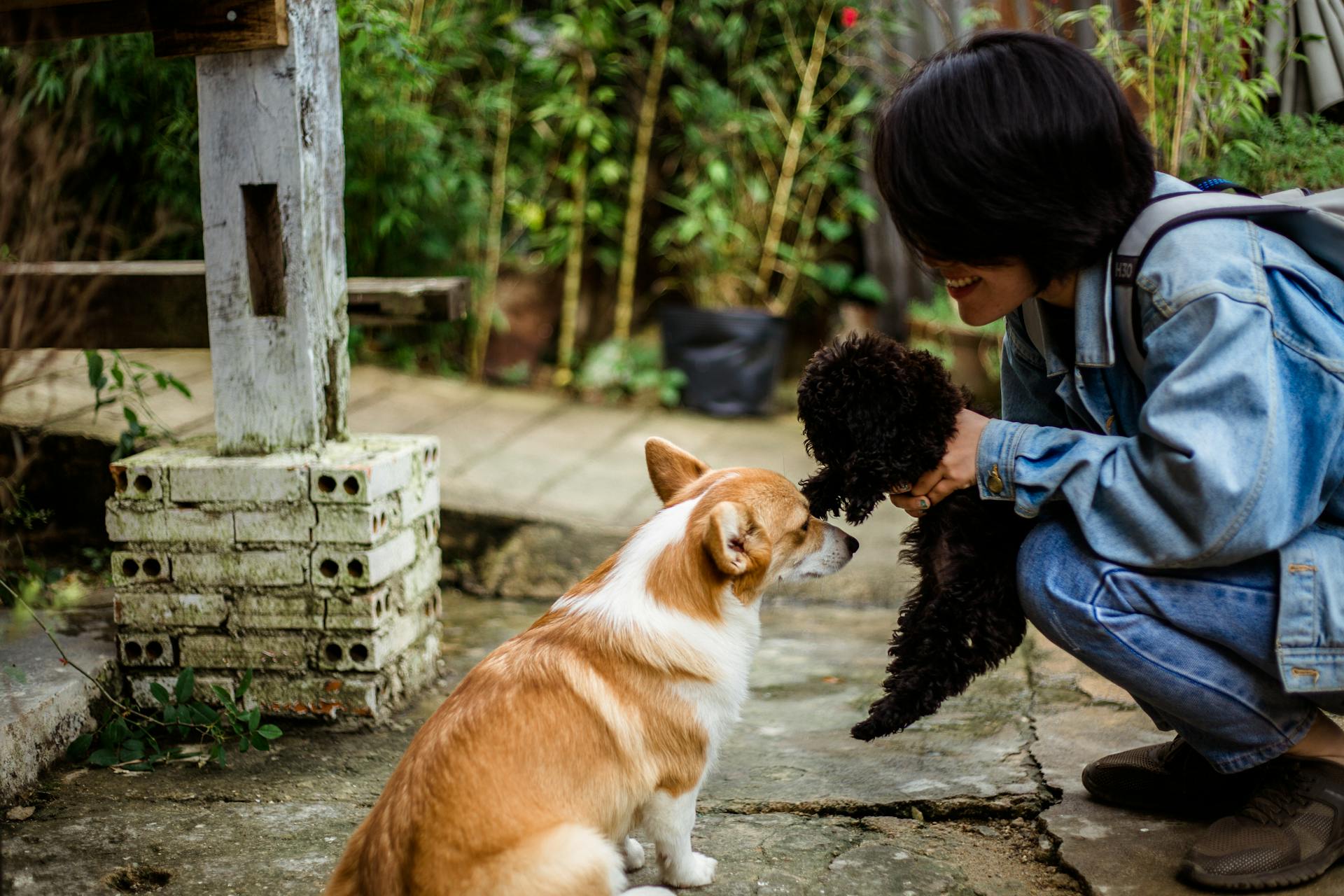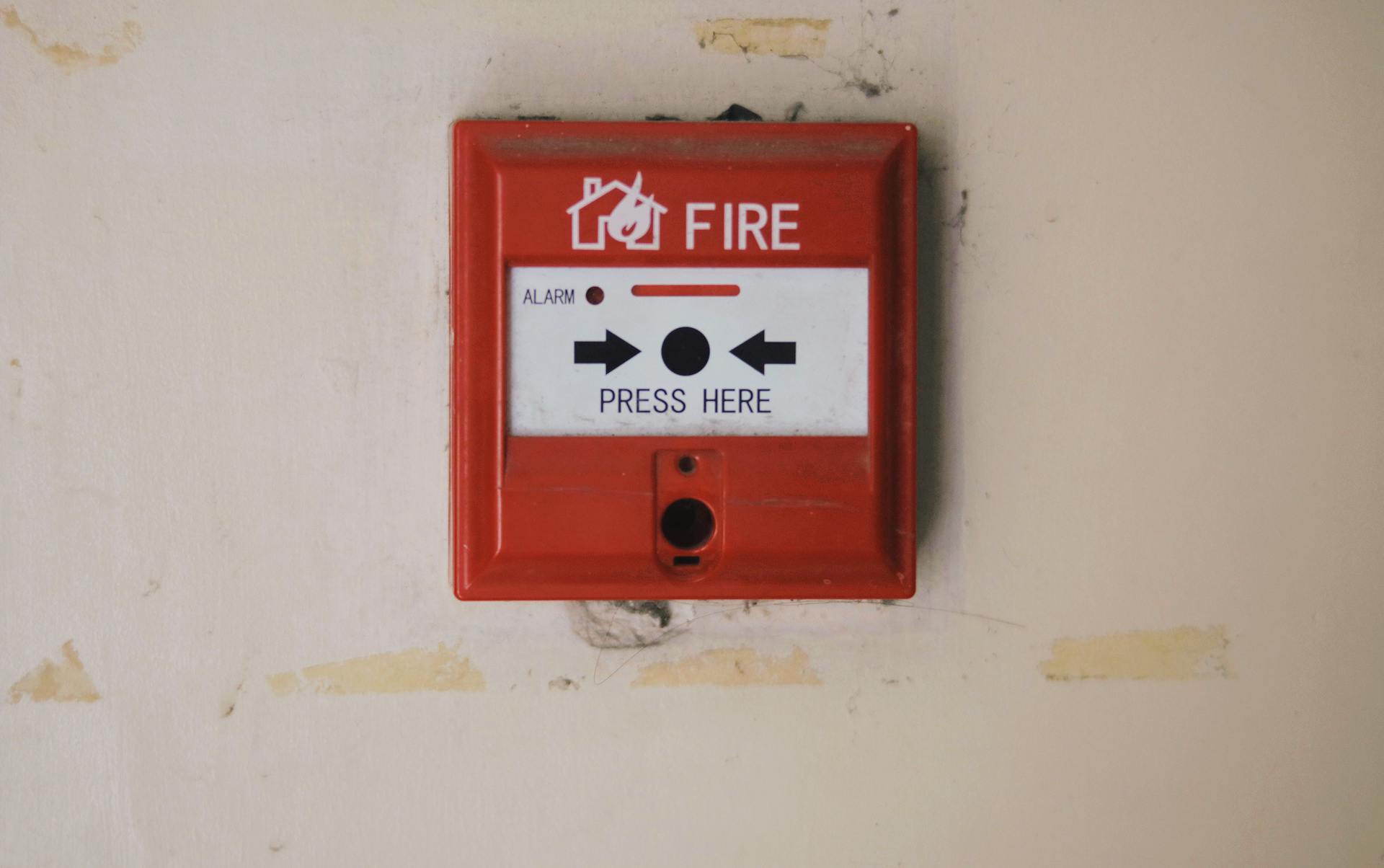
Detection dogs are incredibly skilled animals, and their training is rooted in a deep understanding of canine capabilities. They can detect scents that are too faint for humans to smell, with some dogs able to detect odors that are 10,000 to 100,000 times weaker than what humans can detect.
Their sense of smell is made up of 300 million olfactory receptors, compared to only 6 million in humans. This allows them to pick up on subtle changes in their environment and track specific scents with ease.
Detection dogs are also highly trainable, with some studies showing that they can learn to detect specific scents in as little as 10-15 minutes. Their ability to focus and concentrate is also impressive, with some dogs able to work for hours without getting distracted.
A fresh viewpoint: How Do Service Dogs Sense Seizures
Training Methods
Training a detection dog requires patience and repetition, with the first few months spent teaching basic obedience commands and socialization skills.
Training a sniffer dog for each type of substance they need to detect can take between 2 and 6 months.
Smell recognition training is the most important type of training for these dogs, and it involves exposing them to a variety of smells to help them identify the scent of the substance they're looking for.
Positive reinforcement is a key part of smell recognition training, helping the dog associate the desired behavior with a reward such as a toy or food treat.
Once a dog has learned to identify the scent of the substance, they must learn to alert their handler when they find it, which can be done through passive indications like sitting or standing, or aggressive indications like barking or digging.
Additional reading: How to Teach a Dog to Search by Scent
Differentiation Track
The differentiation track is a crucial part of training sniffer dogs to detect explosives. This method allows trainers to introduce new substances and test the dogs' abilities in a time-efficient way.

Easily accessible odor samples are placed at regular intervals, and the handler and detection dog team must identify the samples with the explosives. The focus of the training can be changed depending on the choice of substances in the odor samples.
To reinforce the conditioning or increase the level of difficulty, distraction substances can be included in the setup. This allows the dog to show that it has learned to detect the new substances and differentiate them from other odors.
Cross-contamination of the samples is avoided through various measures taken during preparation and assembly. The differentiation track is also newly prepared for each dog, preventing distractions due to odors from previous dogs.
Canine Capabilities
Canine teams are a highly mobile and extremely efficient explosives detection tool, with over 1,000 teams deployed nationwide to screen passengers and cargo.
These teams work at more than 100 of the nation's airports, mass-transit and maritime systems, making them a crucial part of the transportation security infrastructure.
In 2019, canine teams were utilized for over 300,000 hours throughout the nation's transportation system, a testament to their effectiveness in detecting and preventing threats.
Here are some key statistics on canine team deployments and utilization:
These numbers demonstrate the significant role canine teams play in ensuring the safety and security of the nation's transportation systems.
Canine Teams
Canine teams are a crucial part of the training process, and they play a vital role in our nation's transportation security. Canine teams typically consist of transportation security inspectors or law enforcement officers paired with explosives detection canines.
The majority of canine teams are made up of law enforcement officers, accounting for approximately 60 percent. The remaining 40 percent are transportation security inspectors. This balance ensures that canine teams are well-equipped to handle a wide range of situations.
TSA provides comprehensive support to canine teams, including training the dog, training the handler, and providing necessary equipment and storage. This support ensures that canine teams are able to operate effectively and efficiently.
You might enjoy: Training an Esa Dog
Here's a breakdown of the support provided by TSA to canine teams:
- TSA trains the dog and the handler
- TSA provides training aides and explosives storage magazines
- TSA conducts annual on-site canine team certifications
- TSA partially reimburses participating agencies for operational costs
In return for this support, participating agencies agree to use the canines in their assigned transportation environment for at least 80 percent of the handler's duty time. This ensures that canine teams are utilized to their full potential.
Training Process
The training process for detection dogs is a lengthy and repetitive process that requires patience and dedication. It typically takes between 2 and 6 months to train a sniffer dog for each type of substance they need to detect.
The training process starts with teaching the dog basic obedience commands and socialization skills, which is crucial for their law enforcement career. Obedience training is vital for all dogs working in law enforcement, as it helps them to follow commands and stay focused while working.
Backchaining scent detection training is a key method used to train reliable working detection dogs, where the dog learns what to do when they find odor first, and then works backward from there. This method involves building motivation for the reward, teaching the indication behavior, and then progressing to finding and indicating smaller pieces of the toy.
A unique perspective: Teaching Dog Obedience
The training process involves breaking down complex behaviors into smaller, manageable steps, and rewarding the dog for each step they complete correctly. This helps to build a strong foundation for the dog's detection skills and prevents them from developing negative associations with the target odor.
Here are the key elements that canine teams are continually assessed on to ensure they demonstrate operational proficiency in their environment:
- The canine's ability to recognize explosives odors
- The handler's ability to interpret the canine's change of behavior
- The handler's ability to conduct logical and systematic searches
- The team's ability to locate the explosives odor source
Core Components of Successful Scent
Backchaining is a crucial training technique for scent detection dogs, where we start with the final step of the behavior chain and work backward. This method allows us to build motivation for the reward and establish a clear indication behavior.
To train reliable detection dogs, we start by building motivation for a favorite reward, such as a ball or food-stuffed toy. Once the value is established, the dog learns the indication behavior, like sitting frozen and staring until released to chase the reward.
Explore further: Reward Based Dog Training
The indication behavior is a critical link in the behavior chain, and we teach the dog to show their handler where the toy is located with a clear indication. This is the stage when we teach the dog what to do and what not to do when they find the toy.
Agility training is essential for drug detection dogs, as it helps them develop the skills to move quickly and effortlessly through tight spaces. This type of training is crucial for these dogs, as they may need to enter small places to search for drugs.
General obedience training is vital for all dogs working in law enforcement, as it helps them follow commands and stay focused while working. A dog that is trained to obey commands is more likely to listen to their handler's commands and stay out of harm's way.
Positive reinforcement is an important part of obedience training, where dogs are rewarded for obeying commands. This helps them learn to respond quickly and correctly to commands, even in difficult or dangerous situations.
Recommended read: Tug of War Toy for Dogs
How It Works
Training a sniffer dog requires a great deal of patience and repetition, typically taking between 2 and 6 months to train for each type of substance they need to detect.
The first few months are spent teaching the dog basic obedience commands and socialization skills. Once the dog has a good foundation, the trainer can begin working on specific detection tasks.
Dogs have many times more olfactory receptors than humans, allowing them to detect even trace amounts of drugs. A dog's olfactory receptors are up to 100,000 times more sensitive than a human's, making them the perfect tool for drug detection.
Trained drug dogs can detect a wide variety of drugs, including marijuana, cocaine, methamphetamine, and heroin. They can also be trained to detect prescription drugs that are being used illegally.
Here's a brief overview of the training process for different types of detection:
- Explosives detection canines: 11-week training course
- Passenger screening canine handlers: 16-week training course
- Canine teams graduate from the TSA canine course after demonstrating proficiency in various venues.
Each team is continually assessed to ensure the canines demonstrate operational proficiency in their environment, including the canine's ability to recognize explosives odors and the handler's ability to interpret the canine's change of behavior.
Training Facilities and Equipment
Detection dog training requires a variety of training facilities and equipment to effectively train dogs for their roles.
A typical training facility for detection dogs includes a large, enclosed area for obedience and agility training, such as a 20x40 foot indoor training room.
Scent work training often takes place in a controlled environment with a specific scent, such as a 10x10 foot room with a hidden source of the target scent.
Training equipment for detection dogs can include a variety of items, such as a cache box or a hide box, to conceal the target scent.
Detection dogs also require specialized equipment, such as a harness and a vest, to identify them as working dogs in public.
A well-ventilated area is essential for training detection dogs, as they can quickly become overwhelmed by strong scents.
The use of positive reinforcement training methods, such as clicker training, is also a key component of detection dog training.
A different take: Scent Training Dog
Training Time and Effectiveness
Training a detection dog requires a significant amount of time and repetition. The training process typically lasts between 2 and 6 months for each type of substance the dog needs to detect.
The first few months of training are spent teaching the dog basic obedience commands and socialization skills. This foundation is crucial for the dog's ability to focus and learn specific detection tasks.
It takes a lot of patience to train a sniffer dog, but the end result is well worth it. The dog must be recertified on a regular basis to ensure they remain sharp and accurate in their detection abilities.
The training process is repeated over and over again until the dog can consistently locate the desired substance. This repetition is necessary to solidify the dog's understanding of their task.
Addiction and Disadvantages
Detection dog training can have its downsides. Dogs can become addicted to the attention and praise they receive during training, which can lead to a decrease in motivation and performance.
This addiction can be caused by overindulging dogs with treats and affection, making them associate training with rewards rather than the task at hand.
Are Drug Dogs Addicted to the Substances They Find?
Drug detection dogs are trained to alert their handlers when they smell certain drugs, but they are never exposed to the drugs themselves.
This means that it's physically impossible for these dogs to become addicted to these controlled substances.
The misconception that drug detection dogs can become addicted to the substances they find is a common one, but it's simply not true.
Drug detection dogs are doing their jobs, and they're not ingesting drugs in the process.
Expand your knowledge: How Do They Train Drug Sniffing Dogs
Disadvantages of Drug
Drug detection dogs are often used in the United States, but they have some major drawbacks. One of the main problems is that they sometimes give false positives, indicating that drugs are present even when they're not.
Handler interference can also be a problem, where the dog's handler influences the dog to give a positive indication, even if there are no drugs present.
False positives can lead to unnecessary stress, anxiety, and even arrest for people who are innocent.
Advantages and Scenarios
Detection dog training is a valuable tool in various scenarios. It's designed to find hidden explosives or drugs, and it requires a combination of systematic searching and cooperation between the dog and its handler.
The training can be tailored to specific environments, such as inside or outside areas, vehicles, lockers, or dressing rooms. This flexibility allows trainers to simulate real-world situations and prepare the dogs for different challenges.
The training can also be designed to mimic various scenarios, such as checking cargo for explosives or searching for drugs in a building. These scenarios can be broken down into different tasks, such as searching multiple boxes or a single piece of luggage.
Here are some common scenarios used in detection dog training:
- Inside/outside area
- Vehicles
- Lockers, dressing rooms
- Multiple boxes (cargo scenario)
- Single piece of luggage (bomb alert)
- A row of backpacks/pieces of luggage (“regular” inspection)
The advantages of detection dogs are numerous. They can cover a large area quickly, detecting even tiny amounts of drugs or explosives. This makes them a valuable asset in the fight against drugs and explosives.
Additional reading: Can Sniffer Dogs Smell Drugs inside You
Advantages of Drug
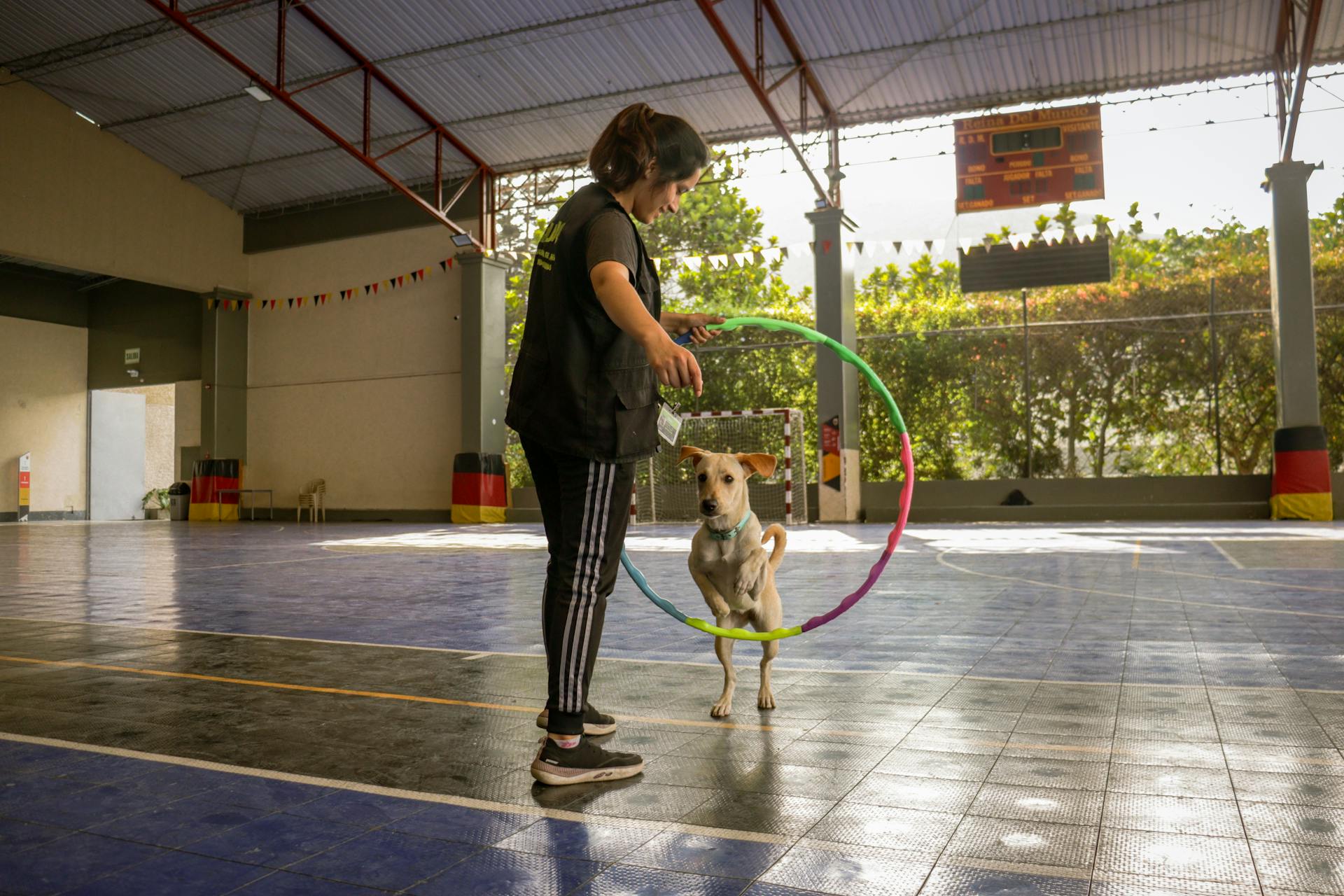
Drug detection dogs can cover a large area quickly, searching an entire building in a matter of minutes.
Their keen sense of smell allows them to detect even tiny amounts of drugs that might be hidden away.
Dogs are non-intrusive, not needing to search through personal belongings or body cavities.
This makes them a great tool for finding illegal drugs without violating people's privacy rights.
Criminals often avoid sites or businesses with canine patrols, preferring to target weaker security instead.
Scenarios
As a dog handler, I can attest that training scenarios are crucial in preparing detection dogs for real-life situations.
Training can be designed in various ways, but the goal is always the same: to find hidden explosives in a defined area.
The dog must be able to search systematically and work cooperatively with its handler.
Training scenarios can take place in different environments, such as inside or outside areas, vehicles, lockers, or dressing rooms.
Check this out: How Do I Become a Search and Rescue Dog Handler

Here are some specific training scenarios:
For cargo inspection, detection dogs need to examine objects carefully, as other odorous substances can make the detection of explosives more difficult.
Training scenarios for cargo inspection can be designed in different ways, such as:
- Multiple boxes (cargo scenario)
- Single piece of luggage (bomb alert)
- A row of backpacks/pieces of luggage (“regular” inspection)
Sources
- https://www.aphis.usda.gov/plant-protection-quarantine/detector-dogs
- https://www.ict.fraunhofer.de/en/comp/em/spuerhundetraining.html
- https://www.dogster.com/dog-training/how-is-a-drug-detection-dog-trained
- https://www.tsa.gov/news/press/factsheets/tsa-canine-training-center
- https://journal.iaabcfoundation.org/weak-links-in-the-canine-scent-detection-behavior-chain/
Featured Images: pexels.com
